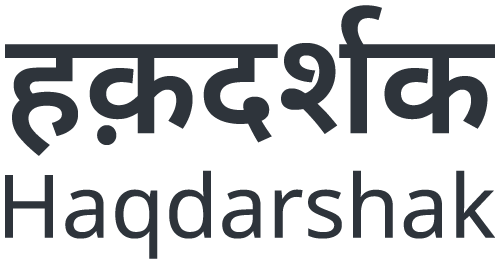MGNREGS: A Closer Look at the World’s Largest Employment Guarantee Scheme

By Urvashi Suraj and Indrani Talukdar
01/ What is MGNREGA?
Under the Mahatma Gandhi National Rural Employment Guarantee Act (MGNREGA) citizens living in rural areas are entitled to 100 days of guaranteed wage employment annually. The aim of the Act is to enhance livelihood security for adults in rural households who are willing to engage in unskilled manual labour.
The Act is implemented through the MGNREG Scheme (MGNREGS). Daily wage rates differ across states, but earlier this year, the Union Ministry of Rural Development issued a notification regarding a national increase in daily wage rates for 2023-24 of up to 10% 1
02/ Livelihood Security During COVID-19
Work demanded under MGNREGA has long been considered an indicator of economic health and the level of distress in rural India, due to its direct link with livelihood security. This can be corroborated by some of the data on work demand (available on the MGNREGA portal)
On average, 27.6 million households and 25.3 million households demanded work per month in 2020-21 and 2021-22 respectively. The average in the months post-COVID is relatively higher than the monthly average of 18.8 households in 2019-20.
Millions of small and marginal farmers struggle to make ends meet through agriculture alone due to lower productivity. The scheme provides them and landless farmers with an additional source of income during the months that agriculture demands the least labour, as evidenced by the chart below:

03/ Asset Creation
One of the scheme’s strongest merits is the significant impact of the assets created through MGNREGA work.
Assets under MGNREGA can be created on community land, or on land owned by individuals. Since assessing the need for asset creation is meant to be a participatory process led by the Gram Panchayat, the nature of assets — many of which are intended to enhance agricultural productivity through works on land and water conservation — are often perceived as valuable by communities. Around 70 million assets have been created to date.
In a 2011 study focused on 3 districts of Madhya Pradesh, most respondents who had assets created on their individual land expressed they would not be able to build any assets without the support from MGNREGA. Several studies have also measured the impact of community assets and reported high returns under water conservation and horticulture projects. There have, however, been many debates about the durability of the assets created and the need for improved maintenance and upkeep.
04/ Challenges in Field Implementation
Despite its merits over 18 years of implementation, the Scheme faces certain limitations in on-ground execution.
Unemployment Allowance
In theory, one of the critical components of MGNREGA is the unemployment allowance it enables, applicable when employment is not provided within fifteen days of demanding work. The daily rate of unemployment allowance payable is to be specified by the State Government as per Section 7(2) of the Act — a minimum of 1/4th of the wage rate.
Despite being a critical component of the scheme, many, including some department officials, are often unaware of this. In 2021, Haqdarshak, in collaboration with Dvara Research, conducted surveys in three states — Andhra Pradesh, Assam, and Chhattisgarh — to understand the various challenges faced by citizens in availing the benefits of this scheme. Even Gram Rojgar Sevaks, who are the first touchpoint for application and job demand, were often either not aware of this component or were reluctant to address questions on this.
Delay in Payments
According to the NREGA Management Information System Portal, over 90% of the payments delivered since 2019-20 were on time — however, many citizens still receive delayed payments. According to a study by Dalberg of the gaps in on-ground implementation of the scheme, only 37% of those who received MGNREGS employment, received their wages on time. During HQand Dvara’s collaborative research project, it was observed that delays largely happen due to delays in fund allocation, or release of funds and poor coordination between the centre and state. In many cases, the payments also may get delayed because of inactive or frozen bank accounts.
Job Card Holders vs Contractors
During a field visit to a village in Assam earlier this year, many citizens expressed that their Job Cards were hardly of any use, as they didn’t receive any notifications of work allotment from the Panchayat.
Many workers still received wages directly into their bank accounts, despite not being actively engaged in the work. For example, routine jobs like earth-filling are no longer done manually and are carried out using JCBs through contractors. However, many Job Card holders receive wages for such work in their accounts, because on paper, the work was allotted to them, and not to contractors. Once wages are transferred to the Job Card holders’ accounts, they are made to hand over a significant chunk of the wages to the contractor, leaving them with only a small fraction.
In a few nearby villages, most villagers had Job Cards, but could not produce them since they had submitted their Cards to the Panchayat. Barely any work was performed by Job Card holders despite entries being made in Work Registers. Again, the wages are transferred to the Job Card holders’ accounts, and then handed over to the contractors.
The Ministry of Rural Development, in the context of MGNREGS, is exploring the use of drones for tasks like progress monitoring, work inspections, and assessing the quality of assets.
Where do Complaints Go?
The complaints that we heard ranged from the inability to receive work as demanded, to the non-receipt of payments, or frequency of delayed payments. Work demands and allotments are recorded on the official Work Register, but surprisingly, there were no records of complaints — presumably because those were made verbally.
Inquiries into late payments also did not garner any helpful information for workers, who were blanketly informed that payments were delayed by the Government.
According to citizens, work demands have not been met for over a decade, and many speculate that they haven’t received work because they haven’t submitted their Job Cards. Attempts to reach out to the Panchayat have only invited further agony and confusion.
05/ Conclusion:
While MGNREGA has significantly impacted rural livelihoods and infrastructure, addressing the range of on-ground challenges is critical. Gaps in awareness and grievance redressal still exist today. Efforts to enhance awareness, streamline payment processes, and ensure transparency in asset creation can contribute to a more effective implementation.
The Ministry of Rural Development’s efforts to establish a formal complaint system through the Janmanrega App and the use of drones to improve monitoring and oversight are promising, but it remains to be seen whether these measures can adequately address the complex challenges and ensure a truly transparent and effective implementation of the MGNREGS.
2https://nrega.nic.in/MGNREGA_new/Nrega_StateReport.aspx?typeN=2
3http://www.iimidr.ac.in/wp-content/uploads/Asset-Creation-under-MGNREGA.pdf
4https://www.ideasforindia.in/topics/poverty-inequality/mnrega-and-its-assets.html
5https://nregaplus.nic.in/netnrega/writereaddata/Circulars/2469AMC_2022-23_Final_19April2023.pdf
6https://www.dvara.com/research/blog/2021/12/13/direct-benefit-transfers-in-assam-chhattisgarh-and-andhra-pradesh-introducing-the-dvara-haqdarshak-study-on-exclusion-in-government-to-person-payments/
7https://policyinsights.in/research/what-are-the-current-gaps-in-the-schemes-on-ground-implementation-that-might-prevent-beneficiaries-from-accessing-their-entitlements/



